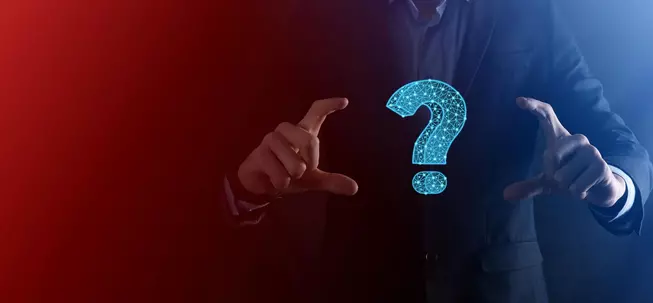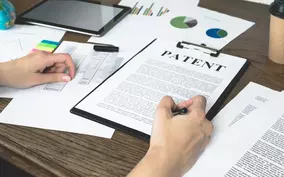
Patent FAQs
A Patent Is Essential For A Successful Business
Patents are forms of intellectual property assets, so don’t think of patents as a cost but an insurance to protect your business. Patents give the owner the right to exclude others from making, using, selling or importing the invention. Patents are a way to legally claim ownership of an idea, invention or design.
A patent can last for 20 years depending on various factors. This means that if you have a patent on your product it doesn’t mean that someone else won’t be able to make something similar until 2028 (or later). However, having a patent does make it more difficult for other people to copy your invention as they would have to create their own version from scratch while designing around your patented technology. This process can take time and money — instead of simply reproducing what you’ve made without credit or compensation.

Patents Are Essential For Investment
Patents will be essential for investment for many startups. Investors will want to have maximum protection for their investments. While they will want rapid traction, they will also look for patented technology and know that the investment is backed by a tangible IP asset and they can recoup their investment. Further, if your technology is patent-pending or patented, it means that you have the rights to your invention and can protect it from being copied or stolen by others.
Many investors such as medical device investors will not invest in companies without patents. This is because if a company cannot prove that its product is unique, then this makes it harder for them to attract investors who a business with a protective moat.

Patents Allow A Company To Stay Independent
Patents are a big part of any business, but they’re especially important for tech founders. Patents give a startup the rights to its technology and keep it out of reach of competitors. Other companies might try to create similar products or even copy the product entirely; with a patent on your solution, you can protect the technology with great intellectual property.
In case you want to speed up growth through partnerships, licensing allows for more flexibility in terms of licensing fees and ownership: if someone wants to use your technology in exchange for royalties instead of paying upfront costs like buying equipment or paying for development time (which can cost thousands upon thousands), then licensing might be an option worth considering!
When it comes time to license your solution, patents also give you more options than other companies have when selling their own products—and these options may be essential if your goal is profit rather than investment value.
Patents Give The Company More Options
The patent, then, gives you as the owner more options. You can commercialize the technology yourself or have others commercialize for you. If you hold a patent, you can license your technology in three ways:
- Exclusive licenses – You can grant one or more exclusive licenses to anyone who wants to use your technology.
- Non-exclusive Licenses – You can grant several non-exclusive licenses to anyone who wishes to use the technology in certain circumstances.
- No license – You can choose not to issue licenses at any time and still have full control over who, what, where, and how your product is used.
Patents Protect Your Company From Larger Competitors
There are numerous instances of cases of larger companies accused of pilfering from startups. You can read about what happened to the photo app Phhhoto here .
Patents give you the legal right to use your invention. Patents also allow you to sue competitors who infringe on your patent rights by using your patented product or process without permission or compensation.
In addition to being a defensive strategy that protects new inventions from being stolen, patents can also serve as an offensive strategy: if someone else is infringing on one of your patented technologies by selling their own products with similar features and functionality, then you have the right to sue them for damages (and potentially force them out of business).

Tech Founders Should Patent Their Innovations
Patents are an essential part of any business. They allow investors to see that you are more than just a good idea. The fact that you cared and thought through the rigors of patenting, and your willingness to do so, shows them that their money is safe in your hands.
Further, patents protect against competitors who want to use ideas without paying for them first. Remember that patents and intellectual property provide insurance against this possibility. While no insurance is foolproof, having IP on your side will allow you to sleep better at night.
Finally, a patent gives your company more options: you can either sell the innovation outright or license it out as needed, depending on your needs and preferences at any given time throughout their lifespan as an organization. In this way, patents keep companies independent and when you get too big or too influential, it may be tempting for someone else to come along and buy out your patent-protected company. That is where the big paydays come for your patent investments.

1. Introduction to PatentPC
Intellectual Property – is a term that refers to creations by the mind. It includes literary and artistic works, inventions, designs, symbols, names, and images. These are some of the intellectual property rights.
Copyright, also known as author’s rights, is a term that describes the legal rights creators have over their artistic and literary works. Copyright covers everything from music, books, paintings, sculptures, films, computer programs, databases and maps to technical drawings.
Trademarks are intellectual property that can include words, phrases, or symbols that identify your company’s source. Trademarks also protect logos and brand names used on products or services.
A service mark is similar in appearance to a trademark but distinguishes and identifies who the source of the service is rather than the goods.
Trade secrets are intellectual Property (IP), rights to confidential information that may be sold or licensed.
Unfair competition protects intellectual property from actions that cause economic harm to a company through deceptive, unfair or illegal behavior.
There are three types of patents:
- Utility patents
- Design patents
- Plant patents
Start by looking at what you want to protect, how you want it to be protected, and for how long. You may also obtain multiple types of protection if necessary because many of these categories overlap.
It is best to speak with an attorney about your specific situation and property.
2. Patent Basics
A patent is an exclusive right that is granted to an invention. A patent is essentially a right that grants exclusive rights to a product or process that provides a new method of doing something or solves a problem in a technical way.
Patents grant the patent holder exclusive rights to prevent others from using, making, importing, or selling the patented invention for a short period.
The U.S. Patent Act, 35 U.S.C. §§ 1 et seq. was enacted by Congress by its Constitutional grant to ensure that inventors have exclusive rights to their discoveries for a limited time.
The U.S. Patent and Trademark Office(USPTO) is the agency responsible for granting U.S. patents and registering trademarks.
- Patents give you the right to prevent others from using, copying, selling, or importing your invention without permission.
- You get protection for a pre-determined period, allowing you to keep competitors at bay.
- Then, you can use your invention.
- You can also license your patent for others to use it others or sell it. This could be a great source of revenue for your company.
2.5 Factors to consider before Patenting:
To bring your invention to market, you will need to think like an entrepreneur.
You can commercialize by:
- Venturing- Venturing is the process of creating a company to help bring your patent to fruition.
- Licensing your patent to a major company to make it commercially viable.
Patents can only be obtained if the invention is your own..
You should be the owner of the rights to your invention.
Patentable invention is a non-obvious and new process, machine or composition of matter or any improvement thereof. It also includes ornamental designs and new varieties of sexually reproduced plants.
Patent classification is a system for organizing all U.S. patent documents and other technical documents into specific technology groupings based on common subject matter.
An invention is considered novel when it is different from all previous inventions (called “prior art”) in one or more of its constituent elements.
One of the requirements to obtain a patent is non-obviousness. If someone with ordinary skill in the relevant field can easily create an invention from prior art, a claimed invention is usually obvious.
Are you wondering how to set up your account with USPTO?
There are a few factors before you set up your account:
These are the three steps to get started:
- Create a USPTO.gov account.
- Create a Customer Number.
- Submit the Patent Electronic Verification Form to register your USPTO.gov account and link your customer number to access and use the Patent Electronic Systems.
The Trademark Modernizing Act(TMA) includes key provisions that will give the USPTO and trademark owners additional tools to better protect and strengthen the integrity of the federal trademark register.
There are three types of patents: utility, design, and plant. There are two types of utility and plant patent applications: provisional and nonprovisional. Under the provisional and nonprovisional types of patent filing are the filing types under each type.
You can draft and file your own applications, but patent attorneys and agents are experts and can help you draft the application in a professional manner.
A patent agent is someone who has passed the Patent Bar through the U.S. Patent and Trademark Office (USPTO) while, a patent attorney is a person who has gone to and graduated from law school. This person has passed the State Bar exam as well as the USPTO exam.
Registered patent practitioners are individuals who have passed the USPTO’s registration exam and met the qualifications to represent patent applicants before the USPTO.
The Office of Enrollment and Discipline (OED) administers the registration exam and maintains a roster of current patent practitioners. OED also investigates grievances submitted against practitioners, provides public information about disciplinary actions against practitioners, coordinates a nationwide Patent Pro Bono Program for under-resourced inventors seeking free legal help, and administers a Law School Clinic Certification Program where law students gain experience in intellectual property law.
When working with an attorney, he/she may ask you to sign a power of attorney.
The power of attorney shows that you have appointed him/her to represent you and handle the patent application process on your behalf.
5. What is a provisional patent application (PPA)?
A provisional patent application (PPA) is a document issued by the U.S. Patent and Trademark Office (USPTO) that helps protect a new invention from being copied during the 12-month period before a formal patent application is filed.
- You enjoy less formal requirements.
- It provides foreign priority for subsequent patent applications filed in countries that are signatories to the Paris Convention.
- It enables immediate commercial promotion of the invention.
- It is a relatively efficient and cost-effective way of protecting an invention during the early development process.
- It effectively adds an additional year to the term of the patent grant.
- Inaccuracy will undo your protection.
- Modifying your invention or adding new improvements will force you to file a new provisional application or regular patent application.
- You must file foreign patent applications within a year.
5.4 What is the recommended format for a provisional patent application (PPA)?
The title is a brief description of your invention
The abstract allows readers to identify the nature of technical disclosures for the invention quickly.
Drawings are required to understand the invention according to the USPTO, and they should be submitted with the application.
The description means that you must provide thorough and thoughtful disclosures, including implementing-construct and using your invention.
You should note any prior art relevant to your invention and describe how it differs from the rest.
Anyone who contributed to the PPA’s description and drawings may be listed as an inventor.
Multiple invention disclosures can be included in one patent application. However, the USPTO may charge additional fees for exceeding a specified number of pages in your application.
When you submit your PPA, you must pay the filing fees.
Before you begin the filing process, it is essential to determine whether your idea can be patentable. Consider factors like cost, time, type, and the subject matter of your invention.
PPAs cannot be evaluated, so there are no requirements to include claims or prototypes. It is always possible to leave it out.
While they are not required for a PPA application, they are necessary for utility patent applications.
For a utility or provisional application, a prototype is not necessary. A prototype is not required for a utility or provisional application.
To avoid filing another PPA, you may include additional information in the utility application. However, you may file another PPA if you are still not close to the utility filing deadline.
6. What next after you submit a PPA?
The patent office will electronically record your submission and give you an electronic filing receipt that basically confirms they received your files and your filing fee. A few weeks after that someone at the patent office will look at your submission to make sure all the required pieces are there, including:
- A specification (description of your invention)
- A cover sheet or transmittal letter that lists the invention title, inventor names, and city/state.
- A proper filing fee (currently $130 for small entity or $65 for micro entity) was paid and received.
If you have all of these items, you will get an Official Filing Receipt from the USPTO.
Upon filing receipt, you can mark the product as “patent in progress.” However, you have only one year of protection under the PPA. It is best to convert the product to non-provisional applications before one year.
Your application will be considered pending once the USPTO has sent you your filing receipt. If you sell or make a patented product, you can show the “patent granted” or “patent pending phrase. This applies to all applications, including a PPA, utility patent, or design patent.
Although the term “patent in process” is more popular, it means “patent filed.”
While you can file multiple provisional patent applications as necessary, it is essential to convert all provisional applications within one calendar year of their earliest filing date.
You will file your non-provisional patent application, and in this application, you will claim the filing date of the provisional patent application. Second, you can petition that your provisional patent application be converted to a full patent.
A utility patent is a form of intellectual property that protects what an invention is, how an invention works and/or how an invention is made and/or used, i.e., the “functional” aspects of the invention. For your invention to qualify for utility patent protection, it must be a machine, process or method, article of manufacture, and/or composition of matter.
Although electronic records can be used as an inventor’s notes, the best option is still a bound notebook with consecutively numbered pages. This inventor’s notebook is used to record when and how you first started building it.
This is crucial because the inventor’s notebooks and corroborating evidence have been vital in proving who invented the invention. Even with the first to file system, inventor notebooks can still prove derivation.
A patent search may be helpful at different stages of an invention process.
You ought to be aware of some imperfections that may come up during the patent search process, These are some that could come up:
- If you don’t publish pending applications, they won’t show up.
- It is possible to search keyword searches for incorrectly classified patents in the databases.
- Recent patents that have been granted won’t be immediately in the system.
- Patent searches won’t uncover foreign patents.
Yes, a patent can have one or multiple inventors. However, the number of inventors is dependent on those that invented the claimed invention. United States Patent Law requires that all inventors must be named in a patent application.
To correct inventorship, one must:
- File a request to change inventorship that sets forth the desired inventorship;
- A statement from each person being added or deleted that the error in inventorship occurred without deceptive intent;
- An oath or declaration of the actual inventors;
- The fee; and
- Written consent of the assignee (where applicable).
The fix may get made at both the USPTO PAIR record and the USPTO assignment record but won’t change the face of the printed patent. They can seek a Certificate of Correction which goes to the end of the printed patent to fix typos.
The creator or originator of an idea, work, or novel invention is presumed to own the copyright to their creations. However, if the work was created as a part of a work-made-for-hire agreement, or in an employer-employee agreement, the copyright belongs to the employer.
If two or more inventors are named on a patent application, the patent rights most likely are jointly owned by the joint inventors unless a written Patent Assignment agreement has been executed by the joint inventors assigning their ownership rights to another individual or company.
- Register copyrights, trademarks, and patents.
- Register business, product or domain names.
- Create confidentiality, non-disclosure or licensing contracts for employees and partners.
- Implement security measures.
- Avoid joint ownership.
The consulting agreement is an agreement between a consultant and a client who wishes to retain certain specified services of the consultant for a specified time at a specified rate of compensation. The terms of the agreement can be quite simple or very complex.
It states that, subject to an agreement between them, co-owners are entitled to an equal, undivided share in the patent and are entitled to perform acts which, under other circumstances, would infringe the patent. In short, both owners are entitled to use the invention without requiring permission from the other.
The creator or originator of an idea, work, or novel invention is presumed to own the copyright to their creations. However, if the work was created as a part of a work-made-for-hire agreement, or in an employer-employee agreement, the copyright belongs to the employer.
If two or more inventors are named on a patent application, the patent rights most likely are jointly owned by the joint inventors unless a written Patent Assignment agreement has been executed by the joint inventors assigning their ownership rights to another individual or company.
- Register copyrights, trademarks, and patents.
- Register copyrights, trademarks, and patents. Register business, product or domain names.
- Create confidentiality, non-disclosure or licensing contracts for employees and partners.
- Implement security measures.
- Avoid joint ownership.
The consulting agreement is an agreement between a consultant and a client who wishes to retain certain specified services of the consultant for a specified time at a specified rate of compensation. The terms of the agreement can be quite simple or very complex.
It states that, subject to an agreement between them, co-owners are entitled to an equal, undivided share in the patent and are entitled to perform acts which, under other circumstances, would infringe the patent. In short, both owners are entitled to use the invention without requiring permission from the other.
Typically, employers are entitled to all intellectual property created at/for their business, unless there exists a contract stating otherwise.
You can request a release from your employer if you have told your employer about your invention, but the company isn’t interested. A release is a document that allows the employer to return your invention.
A nonprovisional utility patent application can be filed with the USPTO through the Office’s electronic filing system called EFS-Web, delivery by U.S. mail, or hand delivery to the Office in Alexandria, Virginia. By far, most patent applications filed at the USPTO are utility applications.
Your utility application should be based from your PPA so you should reuse the PPA application. Reusing information from another patent applications is not prohibited, but you should: Cite the patent or published application in an IDS.
- Your utility application should include:
- Specification including Background, Summary of the Invention, Brief Description of the Drawings, Detailed Description, Claims, Abstract, and Drawings.
- Information Disclosure Statement (IDS)
- Inventor’s Oath or Declaration.
- Filing Fees.
- Transmittal letter.
According to USPTO, these are the documents required in filing the utility application:
- Utility Patent Application Transmittal Form or Transmittal Letter
- Appropriate Fees
- Application Data Sheet (see 37 CFR § 1.76)
- Specification (with at least one claim)
- Drawings (when necessary)
- Executed Oath or Declaration
- Nucleotide and Amino Acid Sequence Listing (when necessary)
- Large Tables or Computer Listings (when necessary)
A specification is a set of documents that describes the invention in detail and how it is made, used, or worked.
This is a submission of background art or information about previous art to the United States Patent and Trademark Office by a patent applicant during the patent prosecution process.
This is a form that the USPTO has provided that allows you to declare whether you are an original inventor or not.
A patent cost vary depending on the type of patent and how many tasks the attorney must perform as well as the complexity of the invention. All rates are available at the USPTO.
Fees depend on many factors, such as whether you are eligible for the small entity discount or if you are filing for power-of- attorney. For the most current information, visit the USPTO website.
The utility patent application transmittal form, also referred to as a transmittal letter, must be filed along with your application. This form specifically identifies what is being included in your application, which includes specification, claims, illustrations, oath, and information disclosure statement.
Drawings can be part of the specification. They can be very useful tools to show the operation of the invention.
These include other documents that are not necessarily required in filing. These are named below.
Interested applicants may submit a request for early publication of their application in compliance with 37 CFR 1.219. The USPTO will publish the application as soon as possible if it is otherwise ready for publication.
A secrecy order bars the award of a patent, orders that the invention be kept secret, restricts the filing of foreign patents, and specifies procedures to prevent disclosure of ideas contained in the application.
Upon filing the non-provisional patent application, the Patent Office reviews your patent application for formality before it is assigned over to an examiner.
After receiving your application, the PTO will verify that it is complete and ready for examination. If your application is incomplete, has no claim, or pays filing fees, a Notice of Missing Parts may be sent. Any deficiencies or irregularities in new applications will be communicated to you through different types of pre-examination notices. These notices require that the missing items be submitted or corrected within the time frame for replying (typically one to two months). All requirements must be met.
An Office action is written correspondence from the patent examiner that requires a properly signed written response from the applicant in order for prosecution of the application to continue.
Once your utility patent application has been approved by the PTO (typically within six months to two years), an examiner will review the case and report the results in a document known as a first Office Action (OA). You can apply for a status inquiry with the USPTO if you do not hear back from the PTO in the time expected.
A first Office action on the merits (FAOM) is typically the first substantive examination of the application.
- Review the rejection and understand its reasons.
- Then respond to every point in the rejection.
- Next, contact the patent examiner to request an interview. During the interview, you can explain your position to him.
- The examiner will send you a summary of the interview after the interview. You can reply to this summary if it is not satisfactory.
The deadline for filing your response is usually three months after the Office Action was sent.
This is issued when there are minor issues to be resolved in a patent application that is otherwise in condition for allowance. Prosecution on the merits is closed, meaning that substantive examination has concluded.
Review the OA and consider any materials cited by the examiner. Then, conteplate how you can describe your invention in order to counter the examiner’s arguments. To address the issues raised by the patent examiner, you should draft an amendment. Include the following:
- A summary of the amendment.
- Reply to rejections by explaining in detail how your claims have changed or how you differ from the prior art.
- Conclude your letter.
Applicants should call the examiner to request an interview. The examiner’s contact information can be found in the Conclusion section of the most recent Office action.
An applicant may also complete and submit an Application Initiated Interview Request Form (PTOL-413A) to request an interview with an examiner.
If an applicant does not submit an acceptable timely response to an Office action, the application will be held abandoned.
Final Office actions are usually second office actions sent by the examiner following a review of the applicant’s response. You can choose to receive a reply as a notice of acceptance or rejection.
A second or subsequent office action can be characterized as final as long as it does not include a new ground of rejection that is neither necessitated by an amendment of the claims nor based on an Information Disclosure Statement.
A Notice of Allowance is a document sent to a patent applicant from the United States Patent and Trademark Office (USPTO) after a patent examiner has decided to issue the requested patent.
In order to be entitled to reconsideration, the patent owner must respond to the Office action. 37 CFR 1.111(b). The patent owner may respond to such Office action with or without amendment and the patent under reexamination will be reconsidered, and so on repeatedly unless the examiner has indicated that the action is final.
Patent claims must be amended using the prescribed Form 13, alongside payment of the prescribed fee.
The amendment seeks to enlarge the scope of the claims of the patent or introduce new subject matter.
Requests for Continued Examination (RCE) is a part of how to patent an idea and asks a patent examiner to review a patent application after the inventor has made necessary changes to an original application. It’s one of the last steps in the patent application process.
When you file a patent application, you have two main chances for approval. If you receive a rejection the first time, you can fix the problems and send your application back. A second rejection is the Final Office Action.
To continue the patent application case, you might have to file an RCE. This reopens your case and allows the examination to continue.
After you file an RCE, the patent examiner might allow continued examination. Rather than granting an application, the examiner might issue an Office Action.
10. What next after The USPTO has issued your patent?
A U.S. utility patent, explained above, is generally granted for 20 years from the date the patent application is filed; however, periodic fees are required to maintain the enforceability of the patent.
As part of the how to patent an idea process, in the United States, patents expire within 14-20 years from the filing date, depending on what you’ve patented and when. Once this happens, your idea passes into the public domain.
The purpose is to compensate patent holders for the delays that occurred during regulatory review. An application for patent term extension can be submitted to the Director of the Patent Office, by the patent owner or its agent.
- The patent must not be expired at the time the patent term extension is submitted.
- The patent term must never have been previously extended.
- The patented invention must have been subject to a period of regulatory review prior to being being marketed or used.
- The patented invention must specifically be recited in the patent claims.
- Patent term extension application must be made within 60 days of obtaining regulatory approval.


